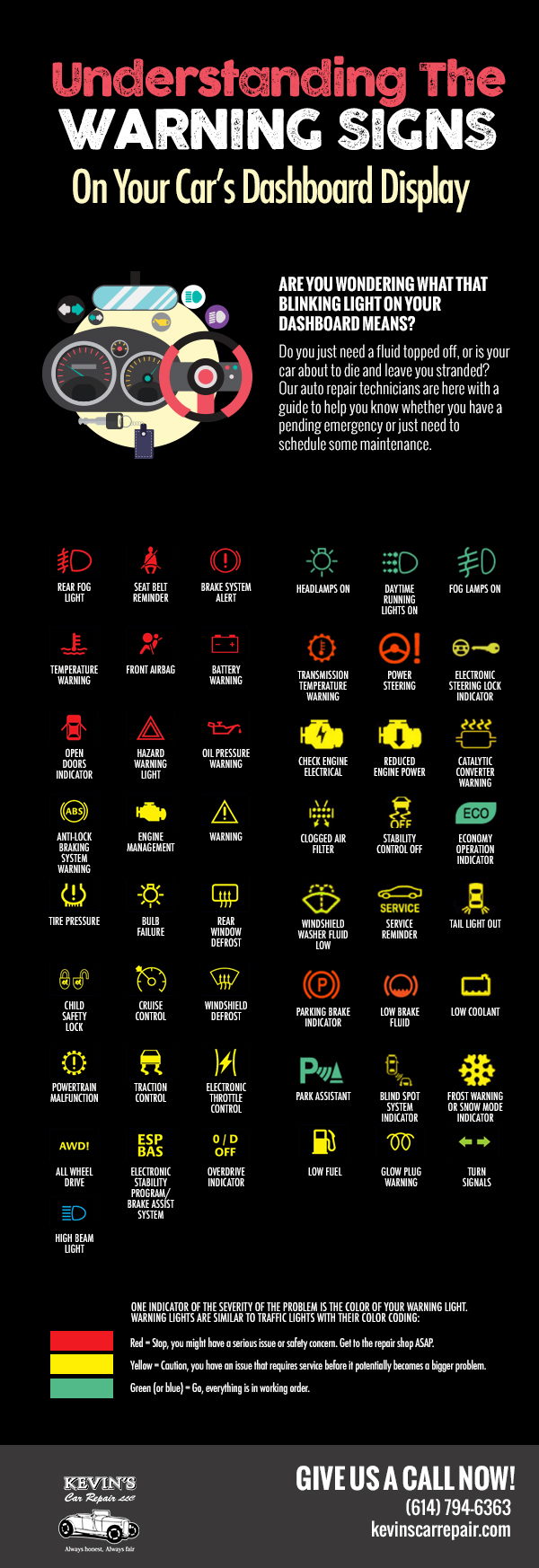Recognizing Your Vehicle'S Caution Lights: What Do They Really Mean?
Recognizing Your Vehicle'S Caution Lights: What Do They Really Mean?
Blog Article
Personnel Writer-Samuelsen Corbett
When you're behind the wheel, those glowing caution lights on your control panel can be a bit difficult. Do you understand what they're trying to tell you regarding your car's health and wellness? Comprehending the significance of these lights is vital for your safety and security and the durability of your car. So, the next time one of those lights appears, would not you want to decode its message properly and take the essential steps to resolve it?
Common Warning Lights and Interpretations
Identify usual warning lights in your vehicle and comprehend their definitions to make sure secure driving.
One of the most regular warning lights include the check engine light, which indicates issues with the engine or emissions system. If this light comes on, it's vital to have your car checked immediately.
https://www.newsday.com/long-island/crime/inspection-stickers-burglary-northport-auto-repair-u35281 alerting light indicates low oil stress, needing immediate attention to avoid engine damage.
A blinking battery light may recommend a defective billing system, potentially leaving you stranded otherwise addressed.
The tire pressure monitoring system (TPMS) light notifies you to low tire stress, influencing vehicle security and gas performance. Disregarding this might lead to harmful driving conditions.
The abdominal muscle light indicates an issue with the anti-lock braking system, jeopardizing your capacity to stop promptly in emergency situations.
Lastly, the coolant temperature alerting light warns of engine getting too hot, which can result in extreme damage if not resolved promptly.
Understanding these common caution lights will certainly assist you attend to issues quickly and maintain safe driving conditions.
Value of Prompt Interest
Understanding the usual caution lights in your vehicle is just the primary step; the relevance of immediately attending to these cautions can't be stressed enough to guarantee your safety and security when traveling.
When a caution light illuminates on your control panel, it's your automobile's way of interacting a prospective concern that requires interest. Ignoring these warnings can bring about extra severe issues down the road, compromising your safety and security and possibly costing you extra out of commission.
Prompt focus to cautioning lights can avoid break downs and crashes. For instance, a blinking check engine light could indicate a misfire that, if left unattended, can create damages to the catalytic converter. Resolving this immediately can save you from an expensive fixing.
Similarly, carwashinteriorandexteriorcleaningnz alerting light may signify low brake fluid or worn brake pads, important elements for your safety and security when driving.
DIY Troubleshooting Tips
If you notice a caution light on your dashboard, there are a couple of do it yourself fixing ideas you can attempt prior to seeking professional aid.
The primary step is to consult your automobile's handbook to understand what the particular caution light suggests. In some cases the concern can be as basic as a loose gas cap triggering the check engine light. Tightening up the gas cap may settle the problem.
One more usual issue is a reduced battery, which can set off different alerting lights. Examining the battery connections for corrosion and guaranteeing they're protected could deal with the issue.
If a caution light lingers, you can attempt resetting it by separating the cars and truck's battery for a couple of mins and after that reconnecting it. In addition, inspecting your vehicle's fluid levels, such as oil, coolant, and brake liquid, can help troubleshoot cautioning lights connected to these systems.
Conclusion
Finally, understanding your car's caution lights is important for maintaining your lorry running efficiently and securely. By immediately attending to these informs and recognizing what they mean, you can stay clear of pricey repairs and potential failures.
Remember to consult your auto's handbook for particular information on each alerting light and act appropriately to make certain a hassle-free driving experience.
Remain educated, remain safe on the road!
